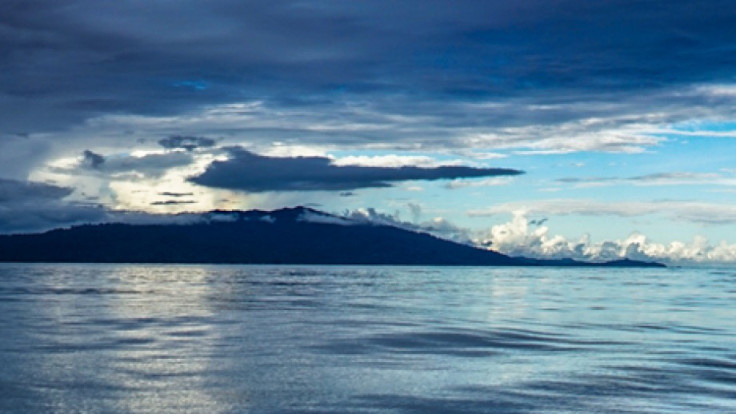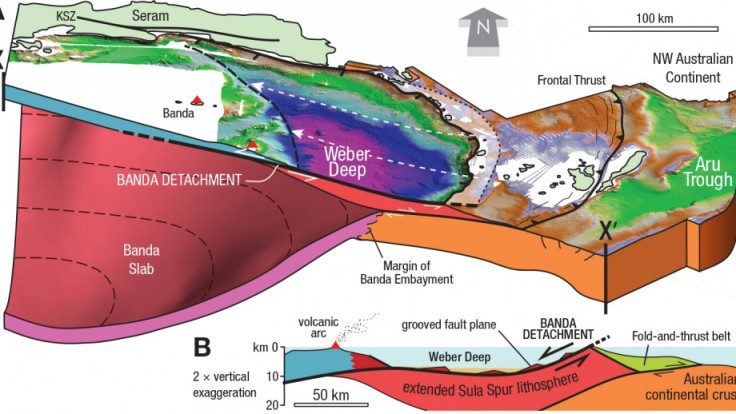Into the abyss: Our planet's biggest exposed fault has been seen for the first time
Banda Detachment will 'explain how one of Earth's deepest sea areas became so deep'.

What may be the largest exposed fault on Earth has been seen and documented by scientists for the first time. The 'Banda Detachment' fault in eastern Indonesia would explain a 7.2km (4.4 mile) deep abyss under the Banda Sea, which until now has remained a mystery to geologists.
This area where the fault was found sits in the Ring of Fire, an area in the basin of the Pacific ocean where many volcanic eruptions and earthquakes occur. Sitting under the Banda Sea is the Weber Deep – the deepest point in our planet's ocean that does not sit in a trench.
In a bid to work out how it formed, scientists led by Jonathan Pownall from The Australian National University (ANU) analysed high-resolution maps of the sea floor. "The abyss has been known for 90 years but until now no one has been able to explain how it got so deep," Pownall said. "Our research found that a 7km-deep abyss beneath the Banda Sea off eastern Indonesia was formed by extension along what might be Earth's largest identified exposed fault plane."
The team found the rocks on the sea floor are marked with hundreds of straight parallel scars. These, they say, are a piece of Earth's crust that has been ripped apart by 120 km of extension along a detachment fault. This is what they say formed the Weber Deep.

"The discovery will help explain how one of the Earth's deepest sea areas became so deep," Pownall said, adding the fault represents a tear in the ocean floor exposed over 60,000sq/km.
Gordon Lister, who worked on the study published in Geology, said they had argued the existence of the Banda Detachment based on previous data and the understanding of the region's geology. However, this is the first time it has been seen an documented by scientists.
"I was stunned to see the hypothesised fault plane, this time not on a computer screen, but poking above the waves," Pownall said. Concluding, the team wrote: "The Banda detachment and Weber Deep may be among the largest of their kind in the modern Earth."
Scientists say the discovery could improve the understanding of tsunami risk in the area – around 90% of the world's earthquakes occur in the Ring of Fire. "In a region of extreme tsunami risk, knowledge of major faults such as the Banda Detachment, which could make big earthquakes when they slip, is fundamental to being able to properly assess tectonic hazards," Pownall added.
© Copyright IBTimes 2025. All rights reserved.






















